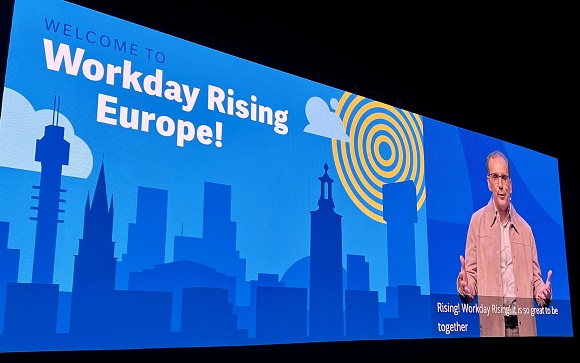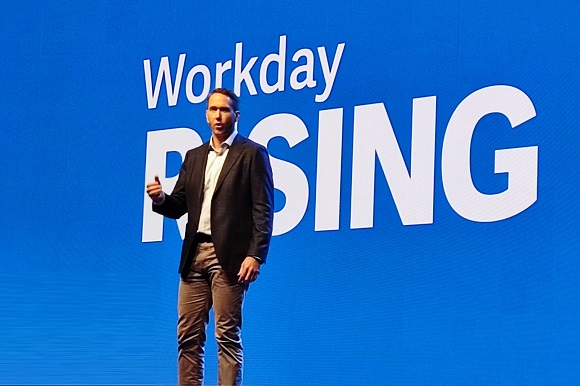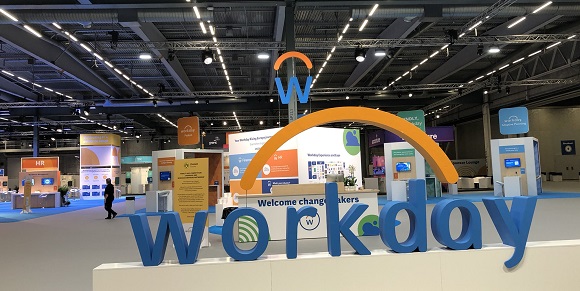Workday Rising Europe: Live keynote report
Modest enough in its core company designator and descriptor, Workday refers to itself as a specialist in enterprise cloud applications for finance and human resources.
Many go further – it’s not unheard of to hear the company referred to as a fully-fledged Enterprise Resource Planning (ERP) platform provider.
The Computer Weekly Developer Network went to Stockholm, Sweden, for Workday Rising Europe 2022 from Tuesday 15 to Thursday 17 November at the Stockholmsmässan conference centre.
Founded in 2005 by Dave Duffield and Aneel Bhusri (formerly at PeopleSoft) Workday today is a cloud-native company that employs a single, cloud-based database for both HCM and financials.
This seventh edition of Workday’s convention was kicked off by Chano Fernandez in his role as co-CEO, who welcomed the 3,500 (approx) attendees to be just-above-freezing Stockholm.
“This week is all about celebrating the positive change you have all made in your organisations over these last ‘so challenging’ years of the pandemic and global upheaval – and of course of our hearts and thoughts g out to those affected by the invasion of Ukraine,” said Fernandez, in a heartfelt personal introduction.
Technically, the company has now achieved a 52-hour maintenance window reduction in the Workday platform “annually”, so, says Fernandez, each user and each department (and indeed each customer) has “more continuous access to the Workday platform”.
Taking over from Fernandez, chief strategy officer Pete Schlampp took the stage to explain how business change (and so, change in life, by extension) is now working at a drastically accelerated rate.
Intelligent Data Core
Looking at the Workday platform today, its Intelligent Data Core is designed to extend out to analytics and reporting, human capital management and financial management, all from that shared a common data core.
Some 5.7 billion verified skills exist inside the Workday Skills Cloud – this goes some way to explaining the question, what is an HR cloud? This is cloud services delivery with specifically-aligned to HR functions, but with highly configurable controls to perform functions like (for example, in the case of an acquisition) aligning different HR systems together when corporate entities come together.
The Workday Intelligent Data Core is connected to the firm’s Sales Cloud; CX Cloud, Marketing Cloud…. and IT Management Cloud.
Key developer tools
The Workday App Builder and Workday Graph API are crucial developer tools for programmers looking to build on top of the Workday platform and are worthy of a story in their own right.
To summarise these technologies in brief here, Workday App Builder is a web-based Integrated Developer Environment (IDE) that offers a cohesive build experience with visual and preview modes for business developers. A low-code/no-code visual capability in this tool has this year been added to App Builder.
Unveiled back in September 2022, Workday Graph API is based on open-source API query and manipulation language GraphQL. This tool is said to streamline the API development, deployment and discovery experience as programmers navigate and discover Workday APIs, reducing complexity and ongoing maintenance while improving responsiveness and developer productivity.
Schlampp touched on the extensions made with these tools and then unveiled the firm’s news related to its accelerator programme in the EMEA region.
Accelerators put pedal to metal
To build, enhance and extend upon the release launch of Workday’s Industry Accelerators programme in the U.S., the first wave of the company’s Industry Accelerators Programme in EMEA will be targeted at helping banking and capital markets and insurance industries in the UK to speed their enterprise cloud transformation efforts alongside Workday partners Deloitte and PwC.
According to a Workday press statement, “More countries, industries, and partners are expected to be added as Workday continues to expand this programme in the region. Workday customers in the banking and capital markets and insurance sectors will now be able to leverage deep industry expertise from partners. Workday partners will work closely with customers to deliver even more innovative and purpose-built solutions that help transform finance, human resources (HR) and planning.”
Barbara Larson, chief financial officer at Workday also took the stage to talk about the amount of what she called the ‘pivot’ process that so many organisations have had to work with through all the recent global disruption.
“We used to do ‘periodic planning’ in the Workday finance department, but with Workday Adaptive Planning today – we are able to cut reporting time in half and increase the number of planning procedures we execute by fourfold,” said Larson. “With Workday Strategic Sourcing we are abe to reduce cycle time by a third through the increased transparency we are able to leverage – this helps finance and procurement teams move faster and add more value to the business.”
Digital employee empathy
Workday also showcased where it has developed with its Peakon service – a technology designed to help track and analyse employee sentiment and experience.
Although many of us who grew up working in the 1980s will find it very new-age when we hear about digital employee empathy technologies, these modern-age developments are surely a force for good to improve wellbeing and make all of our lives better.
People, after all, are what make great organisations successful and we do know that millennials today make up the bulk of the workforce – and we know that and Gen-Z and then Generation Alpha are on their way to follow.
To drop the caps and reference to this event, the work day is rising (and post-pandemic workers may be on their way back to the office in increasing numbers), so digital work technologies are essentially ephemeral but existentially essential.
The Workday Rising event hashtag is #WDAYRISING and Workday tweets at this link.

Co-CEO Chano Fernandez

Workday chief strategy officer Pete Schlampp.




